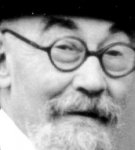
Revue Psychologie Française (Société Française de Psychologie, éditée par Elsevier) : publication de mon étude sur l’actualité de Pierre Janet pour la psychologie de la religion contemporaine.
Saillot I. (2014). Perspectives et actualités de Janet sur les possessions et les extases mystiques. Psychologie Française 59(4), p. 317-330.
Mots clés : Possession, Dissociation, Mysticisme, Croyance, Janet
Keywords : Possession, Dissociation, Mysticism, Belief, Janet
.
RÉSUMÉ
Pierre Janet s’est intéressé tout au long de sa carrière à la psychologie de la religion. Par ses analyses de deux cas principaux, Achille, un cas de possession « par le diable », et Madeleine, une mystique catholique, il montre les liens entre les phénomènes religieux et la « croyance ». Il s’appuie sur ces analyses pour traiter avec succès le cas d’Achille. Ce traitement a fait école, il fait figure de « nouvel exorcisme ». L’intégration des troubles dissociatifs en 1980, dans le DSM-III, est directement inspirée des travaux de Janet (Garrabé, 1999, Van der Hart, 1989, Van der Kolk et al., 1996). Par la suite, des recherches internationales se sont appuyées sur ses analyses cliniques.
.
ABSTRACT
Pierre Janet (1859–1947), a professor of psychology at the collège de France (1901–1934) and the founder of the French Psychological Society in 1901, took interest in the psychology of religion very young and then all along his career. At age 15, a painful crisis of doubts changes him : he becomes atheistic and above all, gains a passion for the psychology of belief (Prévost, 1973). After his “aggregation” degree, he starts examining and curing people with mental diseases at the hospital in Le Havre. Within six years, his works would build the reference synthesis on the “dissociation of the personality”. But the dissociation process is tightly bounded to the properties of belief (L’automatisme psychologique, 1889). The presentation of his famous case “Achille” (1891–1898) possessed “by the devil” will stand for Janet as a textbook case about religious dissociation, and he will consider his successful treatment of this patient as a “modern exorcism” (Névroses et idées fixes, 1898). The famous mystic “Madeleine” who suffered from psychasthenia provided him the opportunity to precise the links between religious phenomena and the properties of belief. Madeleine’s oscillations between torture, void and ecstasy, pertain to “tension” variations that directly impact her belief according to their stage – asseritive or reflected – on the Janetian hierarchy (Janet, 1926–1928). In the second part of his life and career, where Janet takes time to think about his models and practice, he paints a large picture of the evolution of the “self” (L’Évolution psychologique de la personnalité, Janet, 1929) and extends his analysis to traditional cultures where the bounds of the self is more variable, the personality being able to include spirits within itself. The inclusion in the DSM III, of “dissociative troubles” in 1980, for its first atheoretic release, is visibly drawn upon Janet’s English writings (Garrabé, 1999, Putnam, 1989, Van der Hart, 1989). Following this introduction, a great body of international studies took Janet’s modelization and results into consideration (except in France). In 1994, the DSM-IV also adds the dissociative transe disorder category (DTD), which includes religious possession by demons or spirits : this leads to the development of international studies on the psychology of religion within a transcultural frame. After being forgotten for years, the experimental results of Pierre Janet currently undergo an important excavation thanks to recent psychological research, and prove their relevance to contribute to contemporary debates.
.
Dans la même rubrique
0 | 5
par Isabelle Saillot
par Isabelle Saillot
par Isabelle Saillot
par Isabelle Saillot
par Isabelle Saillot


 Accueil
Accueil



 Plan du site
Plan du site
